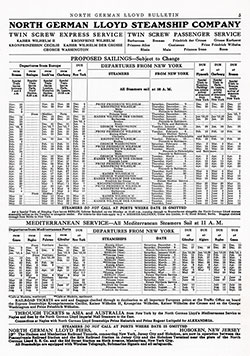Steamship and Ocean Liner Sailing Schedules
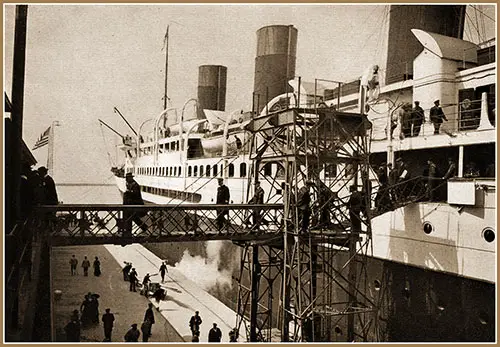
The SS France Docked at Its Pier in Le Havre, Preparing for Its First Voyage to New York on April 20, 1912, Just Five Days After the Tragic Sinking of the RMS Titanic. the Ship Was Specifically Designed With Four Funnels, a Feature That the Public Associated With Speed, Safety, and, Most Importantly, Luxury. Paquebot France, 1912. | GGA Image ID # 2167bf6834
Sailing schedules typically outlined the departure and arrival times and the routes ships took during their voyages. These schedules served as vital information for passengers, allowing them to plan their journeys effectively.
-
Departure Information: This crucial section included the date and occasionally the time the ship was scheduled to depart from its port of origin. It was the starting point of the voyage and set the tone for the entire journey. It may have also specified any pre-departure procedures or requirements for passengers.
-
Port of Call: This was where the magic happened. Sailing schedules detailed the sequence of ports the ship would visit along its route. These were the voyage's key destinations, including intermediate stops and the final destination. Each port of call represented a significant milestone in the journey.
-
Arrival Times: The schedule occasionally provided comforting information about the expected arrival time for each port of call. This allowed passengers to plan for disembarkation or any connecting travel arrangements they may have, ensuring a secure and well-prepared journey.
-
Duration of Voyage: This was the time at sea. The schedule often included the total voyage duration from departure to arrival. This gave passengers a clear idea of how long they would be at sea and helped them plan their activities accordingly. Often, passengers received a postcard-sized "Extract of Log" that detailed the ship's daily progress and the weather.
-
Frequency: Some schedules indicated whether the voyage was a one-time occurrence or part of a regular service with scheduled departures at set intervals. Ships used for regular voyages during the peak season may also have been used for cruises during the off-season.
-
Vessel Information: Occasional details about the ship itself, such as its name, size, capacity, and any amenities or facilities available on board, may have been included.
Overall, sailing schedules from the GG Archives offered an overview of the journey, ensuring that passengers were well informed and prepared for their voyage.
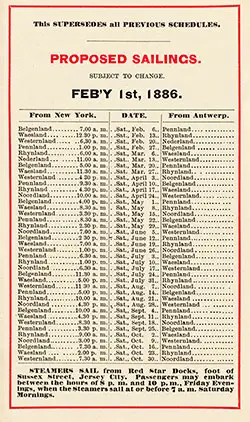
1880s Proposed Sailings
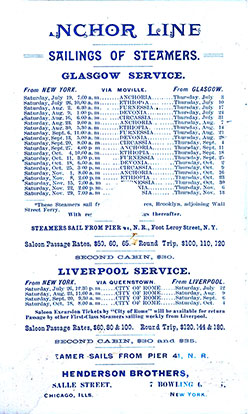
1890s Proposed Sailings
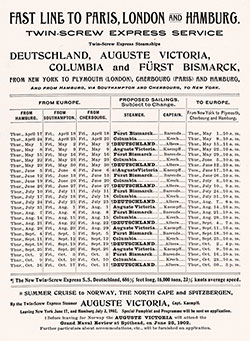
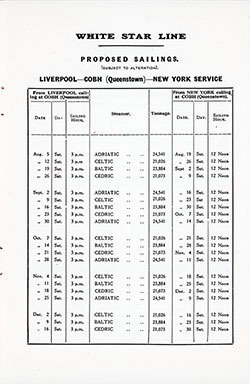
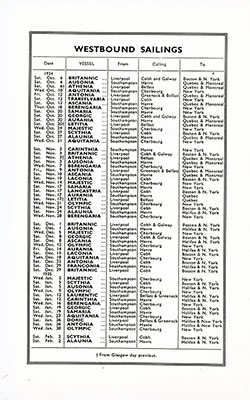
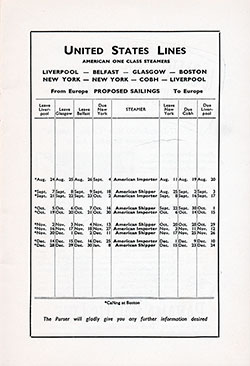
1940s Proposed Sailings
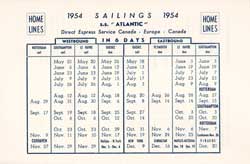
1950s Proposed Sailings

